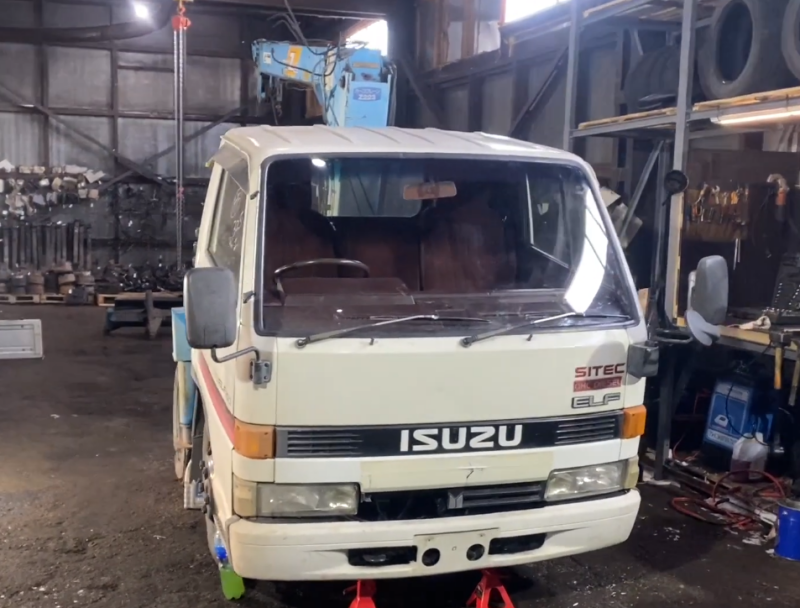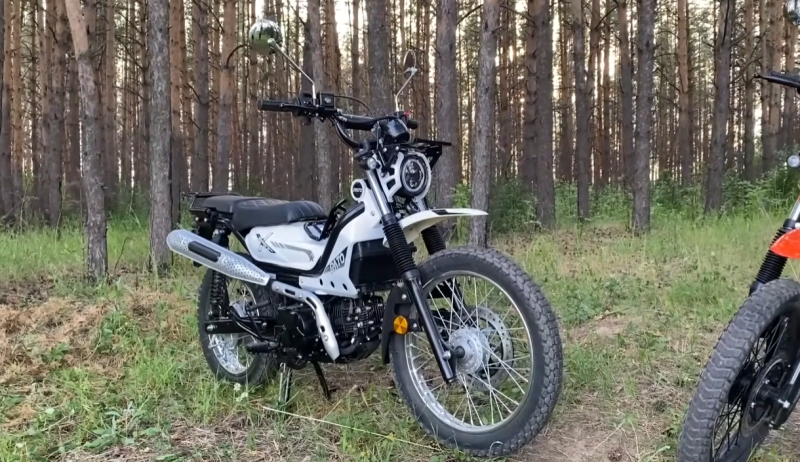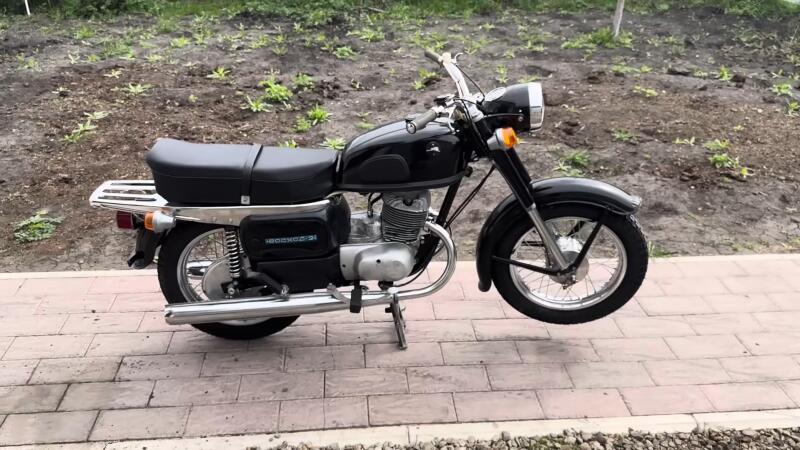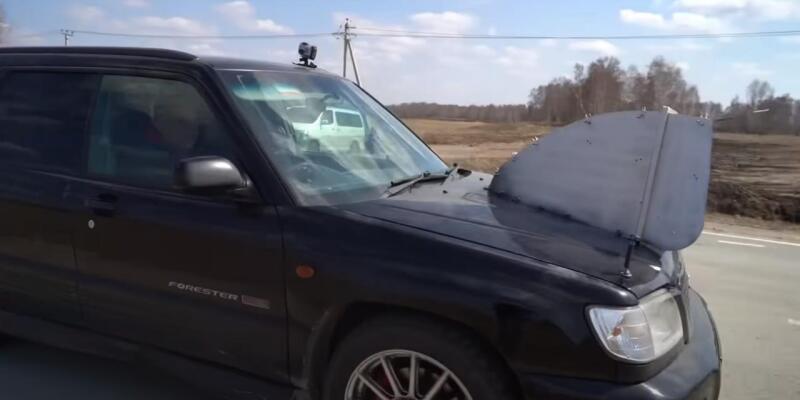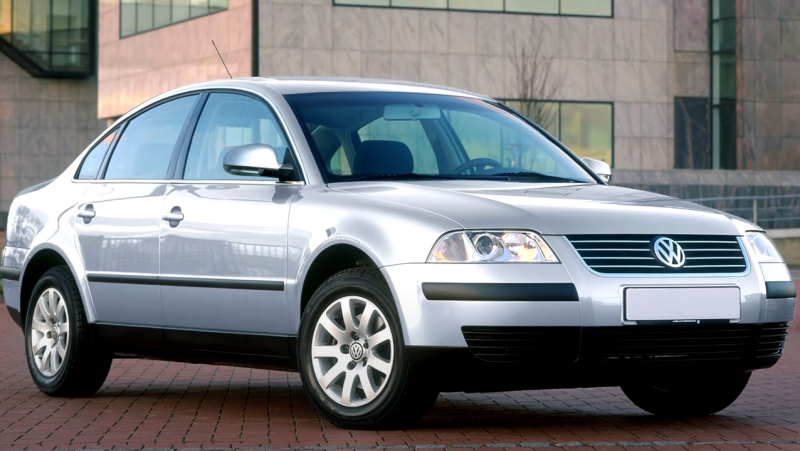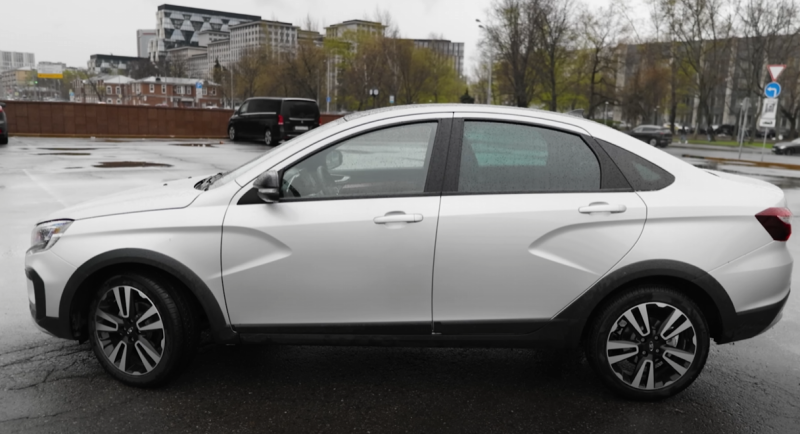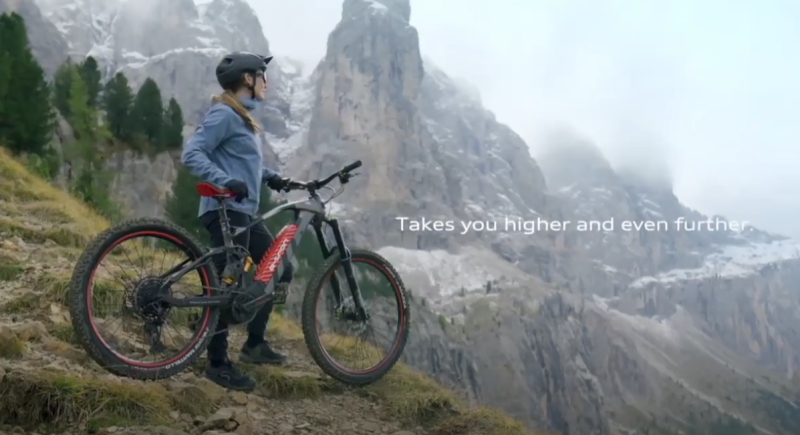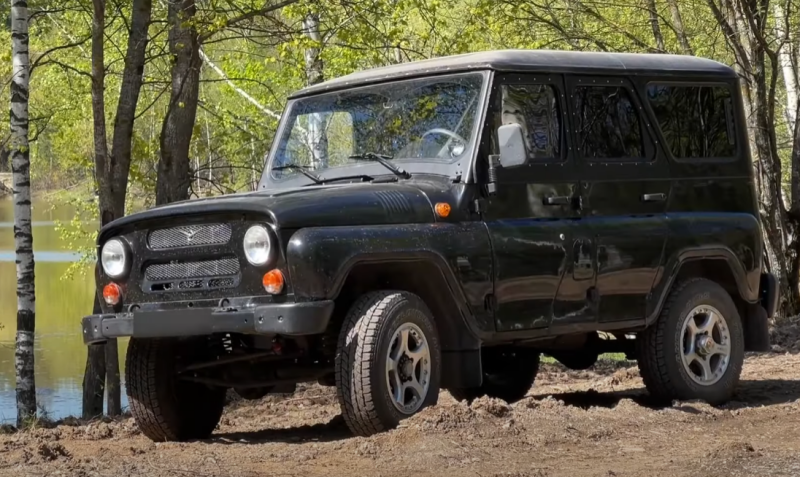They gained popularity mainly due to their comfortable torsion bar suspension and reliable, unpretentious engines. Although the latter also have disadvantages, we will examine them in more detail below.
A bit of history
The fourth generation ELF medium-tonnage trucks began to be produced in 1984. Starting from this generation, trucks are exported to the international market. Already in those years, assembly was carried out in different countries, including the USA. The first cars of the fourth series were equipped with double rectangular optics and a radiator grille with five separate sections (seven for versions with an extended cab).
In 1987, the updated ELF rolled off the assembly line. In these trucks, the grille consisted of two large sections, and the range of engines was also changed. In 1990, another updated version appeared. In this restyling, the radiator grille became solid, and the lower opening and optics were replaced with more aerodynamic ones.
 Inside the Isuzu ELF 4th generation. Photo: YouTube.com
Inside the Isuzu ELF 4th generation. Photo: YouTube.comFor the Japanese market, fourth-generation trucks were offered only with a direct injection diesel engine. The cars were equipped with a two-mode transmission. At first, the ELF was equipped with 4BE1 engines with a power of 110 “horses”, later the trucks received long-stroke 4BD1 internal combustion engines with direct injection. These units could be equipped with turbochargers. In China, medium-duty vehicles were assembled at the BLAC plant, and in the USA they were known as the Chevrolet Tiltmaster and GMC Forward.
Seventh generation trucks will be produced from 2023. In Russia, Isuzu ELFs are assembled at the SOLLERS-ISUZU joint venture, which is located on UAZ production lines in Ulyanovsk.
Design features
Japanese-made trucks are built on a spar-type frame chassis. A special feature of these vehicles is their universal frame, which provides the ability to install a wide range of factory add-ons, from a dump body to a van. “Hodovka” includes a traditional spring suspension. At the front, the axle is complemented by an anti-roll bar.
All truck wheels have drum brakes. The steering wheel is equipped with a hydraulic booster. The car is equipped with a cubic-type cabin with high aerodynamic parameters. The interior is quite spacious, the doors open 90°. There are many drawers inside for documents and personal items. The middle seat can be folded into a table.
Isuzu ELF engines and their weaknesses
4BE1 direct injection engines entered mass production in 1990. A high-speed diesel unit replaced the 4ВС2. Isuzu ELF became the first trucks to be equipped with these internal combustion engines. These are units with an in-line arrangement of cylinders, an air cooling system and a belt drive of attachments. The camshaft is located inside the cylinder block, and the intake and exhaust valves are located in the cylinder head.
Main advantages of 4BE1:
✅ relative ease
✅ simple device
✅ availability of repairs
✅ minimal sensitivity to overheating
✅ no complicated control system
This is not a turbocharged unit, so the consumption of oil and diesel fuel is minimal. 4BE1 is a reliable internal combustion engine; due to the low load on the piston group, its service life is much higher than that of other series. The risks of malfunctions in the operation of the gas distribution mechanism are minimal, and the ignition timing can be set in a garage using the marks on the crankshaft pulley. Thanks to the manual fuel pump, you can pump up fuel and start the engine at a minimum diesel level.
 Under the hood of a Japanese Isuzu ELF truck. Photo: YouTube.com
Under the hood of a Japanese Isuzu ELF truck. Photo: YouTube.comBut 4BE1 also has disadvantages. Due to the lack of hydraulic compensators, it is necessary to regularly adjust the thermal clearances of the valves. If you ignore this task, a corresponding sound will begin to be heard from under the hood. The gaps need to be adjusted every 10 thousand km. The disadvantages of the 4BE1 include low power, difficulty starting in cold weather, and frequent failures of the fuel pump. Glow plugs fail quickly. Injectors are sensitive to the quality of diesel fuel, so they usually need to be changed every 2 years.
After 4BE1, 4BD1 engines were installed on Isuzu ELF. These units were produced in two versions - with turbocharging and direct fuel injection. Water cooling ensures long-term and stable operation of the internal combustion engine. These engines are more powerful compared to their predecessors, so they were installed not only on trucks, but also on special equipment. 4BD1 works normally in any climatic conditions. The injection pump ensures fuel economy.
 Under the bottom of a 1991 Isuzu ELF. Photo: YouTube.com
Under the bottom of a 1991 Isuzu ELF. Photo: YouTube.comThe main disadvantage of 4BD1 is its large size, complexity and high cost of maintenance. These internal combustion engines are demanding on fuel quality. Another problem with any engines on the Isuzu ELF is oil burn. If you do not monitor the lubrication level, oil starvation can lead to turbocharger failure. At high mileage, the particulate filter becomes unusable. It can be removed from the system, since replacement is not cheap.
Weaknesses of Isuzu ELF
One of the problem areas of the truck is corrosion. This is especially true for ELFs of the fourth generation and older. Pockets of rust appear on the wheel arches, sills, bottom and lower parts of the doors. Anti-corrosion treatment will help extend the life of the metal. But if pockets of rust have already appeared on the body, it is better not to delay fixing the problem.
If the fourth generation Isuzu ELF (N-series) engine does not start, this may indicate a faulty battery or starter. In both cases, device diagnostics will be required. Starting problems may be caused by a dirty air filter or a clogged fuel filter. Cleaning or replacement is carried out, depending on the degree of contamination. The weak points of Isuzu engines include glow plugs, so they also need to be checked in case of problems starting the engine.
 Dashboard of a 4th generation Isuzu ELF truck. Photo: YouTube.com
Dashboard of a 4th generation Isuzu ELF truck. Photo: YouTube.comCostly problems with Japanese trucks include clutch problems. Although this mechanism has a large margin of safety, it still wears out over time, and this is due to operating conditions. The clutch will fail faster if the permissible load capacity is regularly exceeded.
Prices
Prices for Isuzu ELF (N-series) depend on the configuration of the truck, year of manufacture, mileage and technical condition. On average, for such fourth-generation cars on the secondary market they ask for about 2-2.2 million rubles. For comparison: new trucks produced in 2023 cost approximately 5-7 million rubles.
Isuzu ELF (N-series) has established itself as a reliable commercial vehicle. Most truck operating problems can be avoided through timely and proper maintenance. The build quality is at a high level, including ELF, which was assembled in the Russian Federation. These trucks are not intended for dirt roads, but for the city and suburban routes they are what you need.
